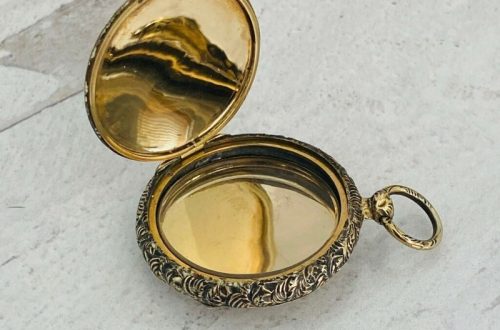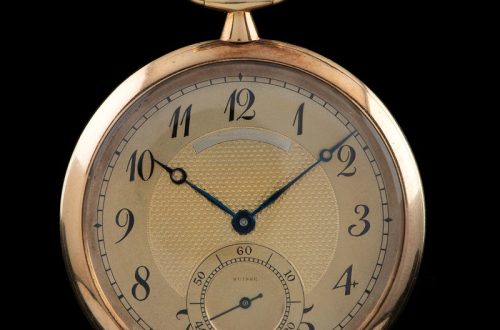Part 1: Understanding the Basics
When it comes to finding the perfect men’s watch, there are a few important factors to consider. Understanding the basics of watch design and function can help you make a more informed decision.
1. Material
The choice of material for a watch is a critical consideration that can significantly impact its aesthetic appeal, durability, and overall feel. Stainless steel remains a popular choice due to its exceptional combination of strength, durability, and versatility. It offers a clean, modern look that effortlessly complements various styles, making it suitable for both formal and casual occasions. Stainless steel watches are known for their resistance to scratches, corrosion, and other forms of wear and tear, ensuring a long-lasting and reliable timepiece.
For those seeking a more classic and timeless aesthetic, leather watches offer a luxurious and sophisticated option. The natural texture and warmth of leather add a touch of elegance to any outfit, creating a timeless and sophisticated look. Leather straps come in a variety of colors and finishes, allowing for customization to suit individual preferences. While leather watches may require occasional care and maintenance, their timeless appeal and luxurious feel make them a worthwhile investment.
Ceramic watches, on the other hand, offer a contemporary and sleek design that is both visually striking and highly durable. Ceramic is a scratch-resistant material with a smooth, glossy finish that is resistant to fingerprints and smudges. While ceramic watches may be more expensive than traditional materials, their durability and unique appearance make them a desirable option for many watch enthusiasts.

2. Movement
The movement of a watch is the heart and soul of its timekeeping mechanism. Quartz movements, powered by a battery, are renowned for their precision and low maintenance. They are ideal for individuals who prioritize accuracy and convenience. Automatic movements, on the other hand, harness the energy generated by the wearer’s wrist movement to wind the mainspring, eliminating the need for a battery. They offer a balance of accuracy, reliability, and a sense of mechanical craftsmanship. Mechanical movements, often associated with traditional watchmaking, are powered solely by a mainspring. They require manual winding or self-winding to maintain power and offer a deep appreciation for the intricacies of horology.
When selecting a watch, it’s essential to consider your personal style, lifestyle, and preferences. The combination of materials and movement can significantly impact the overall character and functionality of a timepiece. Whether you prioritize durability, aesthetics, or the mechanical intricacies of watchmaking, the right choice will undoubtedly become a cherished companion for years to come.
Part 2: Consider Your Lifestyle
When shopping for a men’s watch, it’s important to consider your lifestyle and how you plan to use the watch. Different watches are designed for different activities and occasions, so think about how you will be wearing the watch on a daily basis.

1. Sport Watches
For those who embrace an active lifestyle, a sport watch is an indispensable companion. These timepieces are engineered to withstand the demands of outdoor adventures and athletic pursuits. Durability is paramount, with rugged materials like stainless steel or titanium often used for the case and bracelet. Water resistance is another essential feature, ensuring that the watch can withstand splashes, rain, or even submersion in water. Many sport watches also incorporate additional functionalities such as a chronograph for precise time measurement, a tachymeter for calculating speed, or a heart rate monitor for tracking fitness levels. The choice of strap is equally important, with options ranging from durable rubber or silicone for comfort and flexibility to sturdy NATO straps for added security. A sport watch that combines ruggedness, functionality, and style can enhance your active pursuits while making a statement.
2. Dress Watches
When elegance and sophistication are paramount, a dress watch is the epitome of refined timekeeping. These watches are designed to complement formal attire and professional settings. Minimalism is key, with clean lines, understated dials, and a focus on timeless aesthetics. The case is typically slim and refined, often crafted from precious metals like gold or platinum for a touch of luxury. The dial is uncluttered, featuring simple hands and markers for a classic appearance. The choice of strap can significantly influence the overall style. Leather straps, particularly those made from calfskin or alligator, exude a timeless and luxurious appeal. Metal bracelets, such as those crafted from stainless steel or Milanese mesh, offer a more contemporary and versatile look. A dress watch is more than just a timekeeping device; it’s a symbol of refined taste and personal style.
Part 3: Finding the Right Size and Fit
The size and fit of a men’s watch are crucial factors to consider when making a purchase. A watch that is too large or too small can be uncomfortable to wear and may not look aesthetically pleasing.

1. Case Size
The case size of a watch is a crucial factor in determining its overall aesthetic and wearability. It refers to the diameter of the watch face, measured in millimeters. Watches come in a wide range of case sizes, from petite and understated to large and bold. The choice of case size often depends on personal preference, wrist size, and the desired level of attention. Smaller case sizes, typically under 40mm, offer a more discreet and versatile look, suitable for both formal and casual occasions. Larger case sizes, exceeding 42mm, can make a bold statement and may be easier to read for those with impaired vision. Ultimately, the ideal case size is a matter of personal taste and comfort.
2. Strap Length
The length of a watch strap is often overlooked, yet it plays a crucial role in both comfort and aesthetics. A strap that is too long can dangle loosely, appearing sloppy and potentially interfering with daily activities. Conversely, a strap that is too short can restrict movement and cause discomfort. The ideal strap length should provide a snug but not overly tight fit, allowing for a comfortable and secure wearing experience.
Many modern watches feature adjustable straps with built-in mechanisms that allow for easy customization. These straps typically have small holes or notches that can be adjusted using a simple tool or your fingers. However, for those with larger wrists or specific preferences, alternative strap options may be necessary. Leather straps, for example, can often be customized by a professional watchmaker or jeweler, while metal bracelets may require a link removal or addition.
Before purchasing a watch, it’s highly recommended to measure your wrist circumference to determine the appropriate strap length. This can be done using a simple measuring tape or a piece of string. Once you have the measurement, you can compare it to the strap length specifications provided by the watch manufacturer or retailer. By ensuring that the strap fits correctly, you can enjoy a comfortable and polished appearance, enhancing the overall satisfaction of your watch purchase.

Part 4: Evaluating Features and Functions
Modern watches come with a wide range of features and functions, from basic timekeeping to advanced complications. Consider which features are important to you when selecting a men’s watch.
1. Water Resistance
Water resistance is a crucial factor to consider when purchasing a watch, especially if you plan to wear it in wet conditions or during outdoor activities. The level of water resistance is typically indicated by the ATM (atmospheres) rating. A watch with a 3 ATM rating is considered water-resistant for splashes and light rain, while a watch with a 10 ATM rating can withstand swimming and shallow snorkeling. For diving or other deep-water activities, a watch with a higher rating, such as 20 ATM or more, is essential. It’s important to note that water resistance is not the same as waterproof. Watches with even the highest ratings may not be suitable for extreme pressure or prolonged submersion.

2. Complications
Complications, also known as functions or features, refer to any additional capabilities beyond basic timekeeping. These can range from practical functionalities to aesthetic enhancements. A chronograph, for example, is a popular complication that allows for precise time measurement. A moon phase display adds a touch of elegance and can be useful for astronomical enthusiasts. A date complication, while common, can be a valuable feature for everyday use. The choice of complications depends on personal preferences and lifestyle. However, it’s important to consider that watches with more complications may be more complex to operate, require more maintenance, and can be more expensive. Ultimately, the ideal watch is one that combines the necessary features with a design that suits your individual style and needs.





